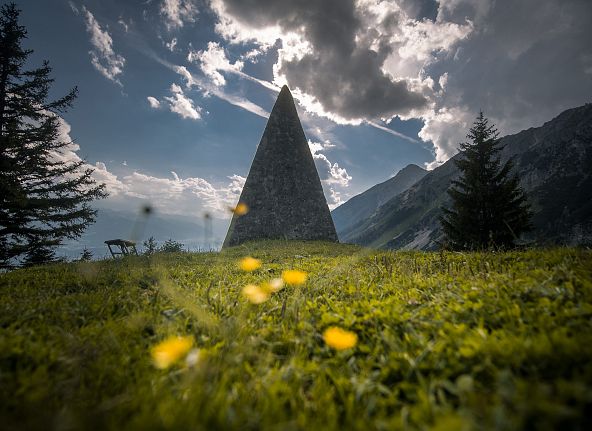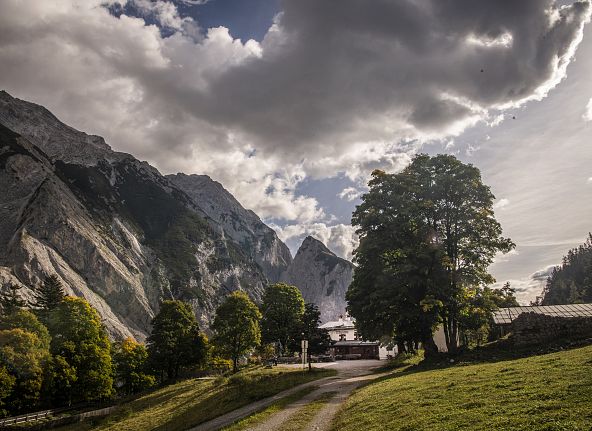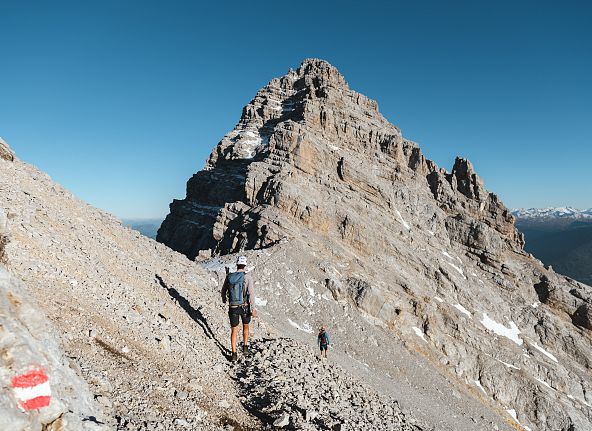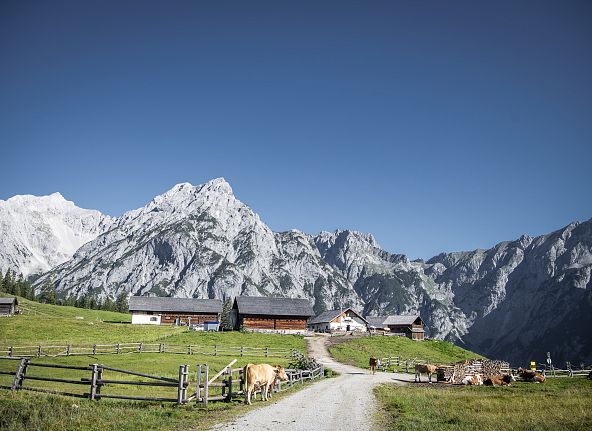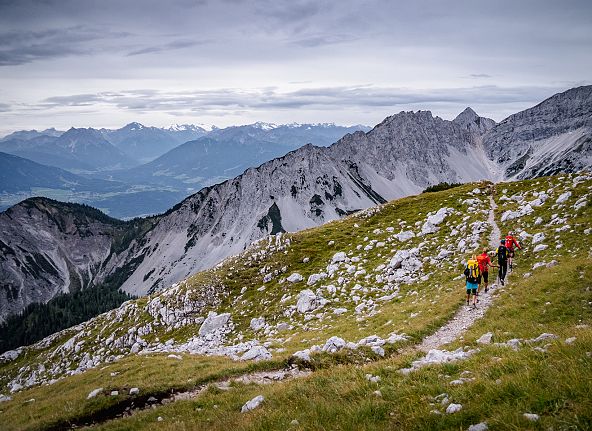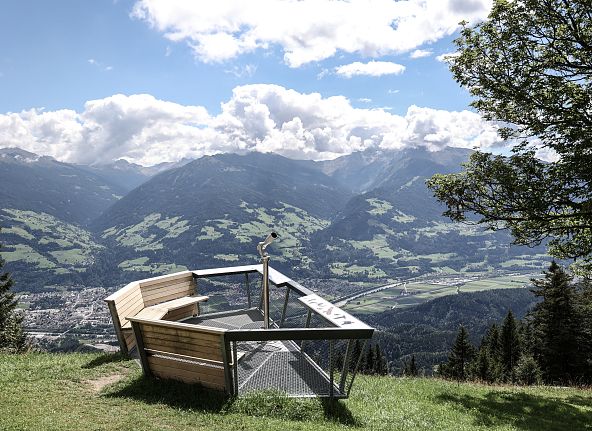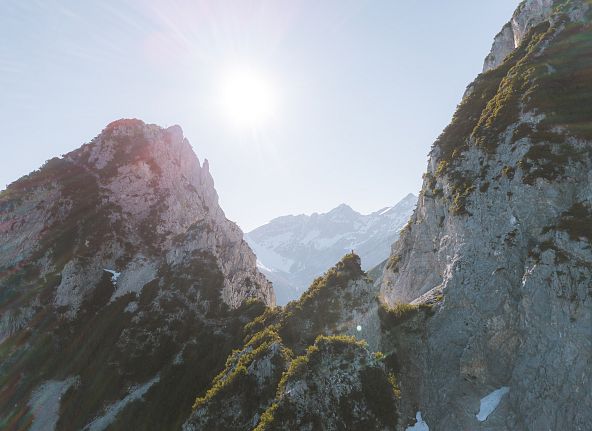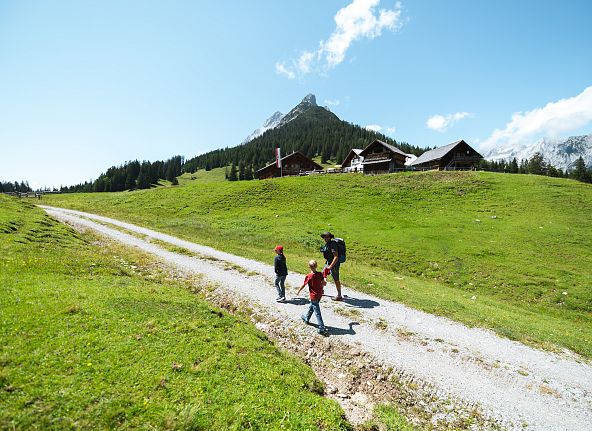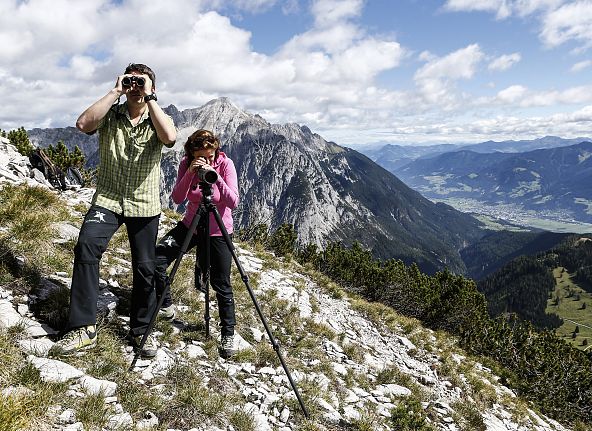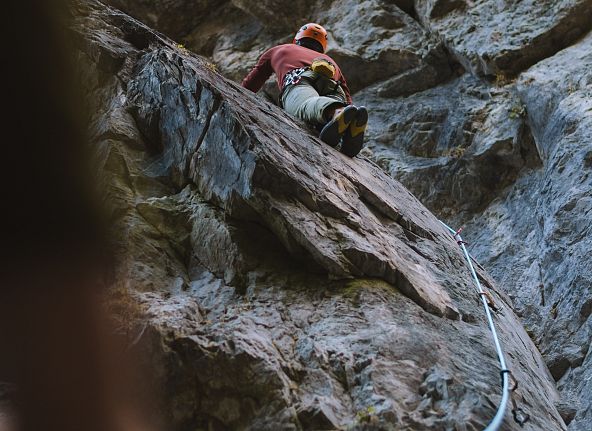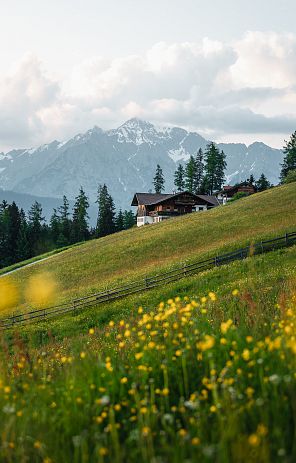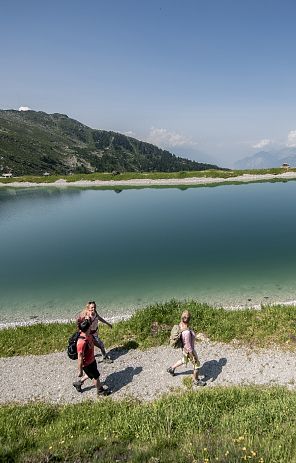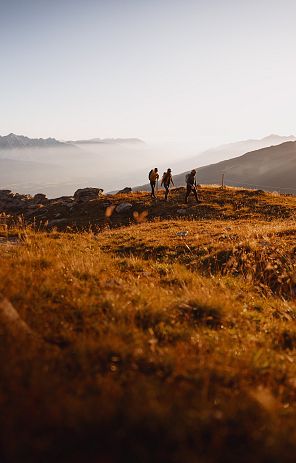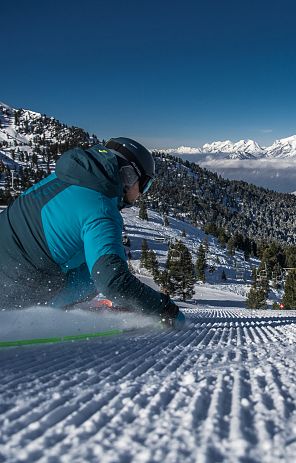Nature Park. Karwendel
The Karwendel Nature Park between the Inn and Isar rivers, Lake Achensee and the Seefeld valley is a protected area with many special features and has scenic beauty of international importance, with the advantage of being right on the "doorstep" of the Tyroleans.
In this case, the inconspicuous is so close! The Karwendel has a primeval alpine landscape that is unique in Europe, such as the Kleiner and Großer Ahornboden, the Tortal, with the highest rock faces in the Karwendel Nature Park and also a "Grand Canyon", the Vomperloch! It was voted Nature Park of the Year in 2020!
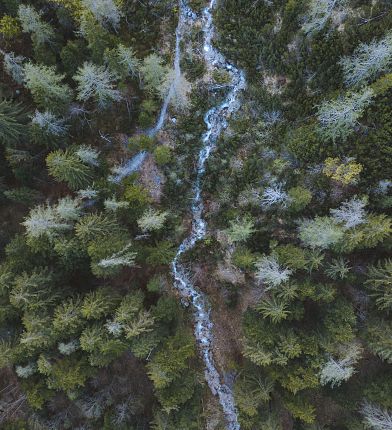
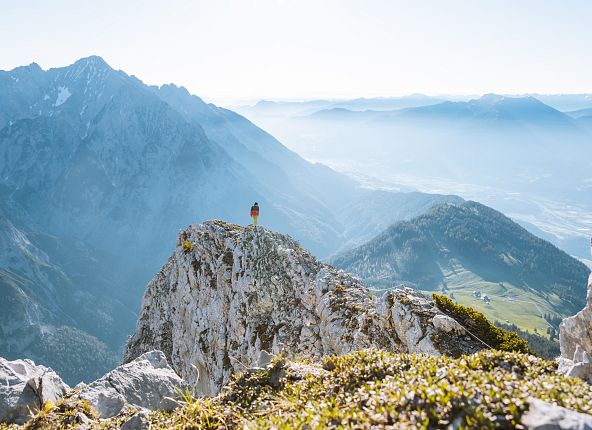
Area size:
The Tyrolean part of the Karwendel has a size of 727 km2, in Bavaria the directly adjacent Bavarian nature reserve "Karwendel und Karwendelvorgebirge" reaches another 190 km2. In total, the Karwendel Nature Park and the Bavarian nature reserve cover an area of approx. 920 km2.
The Karwendel Nature Park is therefore
- one of the largest protected areas in the Eastern Alps with a total area of more than approx. 920 km2
- the largest nature reserve in Austria
- the largest protected area in Tyrol (727 km2)
Due to its climatic and topographical conditions, the Karwendel has an above-average proportion of natural habitats such as primeval forests and wild rivers and is home to an exceptionally high diversity of species.
Many typical animal and plant species of the Alps such as the golden eagle, sandpiper or the German tamarisk (riparian forest plant) have significant populations here. Due to this high natural value, the Karwendel is also part of the European protected area network "Natura 2000", which has set itself the goal of preserving the European natural heritage.
The Karwendel mountains are one of the best known and best hiking regions in the Alps. Visitors are particularly impressed by the impressive mountain nature, where many alpine animals such as the ibex, chamois, golden eagle and many others still live in the wild.
The Karwendel is also an ideal area for long-distance hikers in the heart of Tyrol: depending on your vacation preferences and fitness level, you can switch off completely for a few days or even longer on the trails in the Karwendel mountains and leave the hustle and bustle of everyday life behind you.
The nature reserve
The Karwendel nature reserve is part of the Karwendel mountain range, which is largely located in Tyrol, but also to a lesser extent in Bavaria. The nature reserve itself has a total area of approx. 543 km² and forms the core area of the Karwendel Nature Park, which also includes the surrounding Bärenkopf, Falzthurntal - Gerntal, Großer Ahornboden, Martinswand - Solstein - Reither Spitze, Nordkette and Vorberg nature reserves, the Eppzirl and Achental West quiet areas, as well as the small Martinswand and Fragenstein nature reserves.
As an independent mountain range, the Karwendel is bordered in the south by the Inn Valley between Zirl and Jenbach. In the west, the Seefelder Sattel, in the northwest the Isar, in the northeast the Walchenbach and in the east the Achenseesenke form the natural boundary of the Karwendel.
Four independent mountain ranges form this mountain group
- The Inntal and Solstein chain in the south, with the Kleiner Solstein (2637 m SH) as the highest peak
- The Gleirsch - Halltal chain with the Großer Bettelwurf (2725 m SH) as the highest mountain
- The Karwendel main ridge or Hinterautal - Vomp chain with the highest mountain in the Karwendel, the Birkkarspitze (2749 m SH)
- The Nördliche Karwendelkette with the Östliche Karwendelspitze (2537 m SH) as the highest peak. In the east, this mountain range is divided into the Falken group, the Gamsjoch group, the Sonnjoch group and the Rappenspitz-Stanserjoch group.
Places of power in the Karwendel Nature Park
More about the Halltal
Location: The Halltal is bordered to the south by the Haller Zunterkopf (1966 m), to the west by the Stempeljoch and the Stempeljochspitze (2543 m) and to the north by the Großer Lafatscher (2696 m), the Lafatscherjoch, the Speckkarspitze (2621 m) and the Kleiner and Großer Bettelwurf (2650 and 2726 m respectively).
Landscape: The steep southern flanks of the Bettelwurf with the almost 40° inclined Wetterstein limestone slabs dominate the valley. The bizarre slab towers of Gehängebreccie stand on the slabs. This slope is largely free of forest and gives the narrow valley an alpine character.
Accessibility: The Halltal has not been accessible by car for several years. However, there are shuttle buses to St. Magdalena in summer (for more information call +43 5223 45544-0). There is a large parking lot with a playground and WC facilities at the entrance to the Halltal.
Living environment:
1. below St. Magdalena there is a mixed mountain forest rich in yew trees ("Eibental").
2. between St. Magdalena and the manor houses lies a rare cold-air moor. This type of bog, which is only known from Austria, is formed by cold air escaping from the surface of boulder, coarse rubble and landslide dumps. Condensation promotes the growth of various mosses, especially peat moss. Due to the special site conditions, the area remains free of trees and is mainly colonized by alpine plants.
3. directly after the bridge over the Halltalbach stream on the way to the Bettelwurfhütte hut, there is a small scree area in whose hollows the protected lady's slipper (Cypripedium calceolus) grows. The yellow and brown flowers, up to 8 cm long, are a "boiler trap" for insects, which can only leave via the stigma and the sticky pollen.
4. of great cultural and historical interest is the salt mining in the Halltal valley, which is impressively documented in the salt mining museum near the manor houses with show tunnels.
5 Issanger at the head of the Halltal valley:
This area is characterized by its idyllic location as well as the diversity of habitats: In addition to larch meadows and forest islands with alpine roses, there are also wet meadows and fens. Especially in summer, the woodland-free area is a colorful and flower-rich habitat:
Swallowwort - Gentian (Gentiana asclepiadea)
European globeflower (Trollius europaeus)
Large meadow button (Sanguisorba officinalis)
As representatives of various orchids, several orchids (Dactylorhiza maculata, D. majalis, Traunsteinera globosa) and the great orchid (Gymnadenia conopsea) should be mentioned in particular. The wetter areas are dominated by sedges (Carex davalliana, C. elata and C. panicea) as well as marsh horsetail (Equisetum palustre) and cotton grass (Eriophorum latifolium). This habitat is also home to numerous amphibians.
At the head of the Isstal valley, larch forests and mountain pine scrub forests have developed as a result of avalanches, above which alpine grassland and rocky outcrops can be found.
